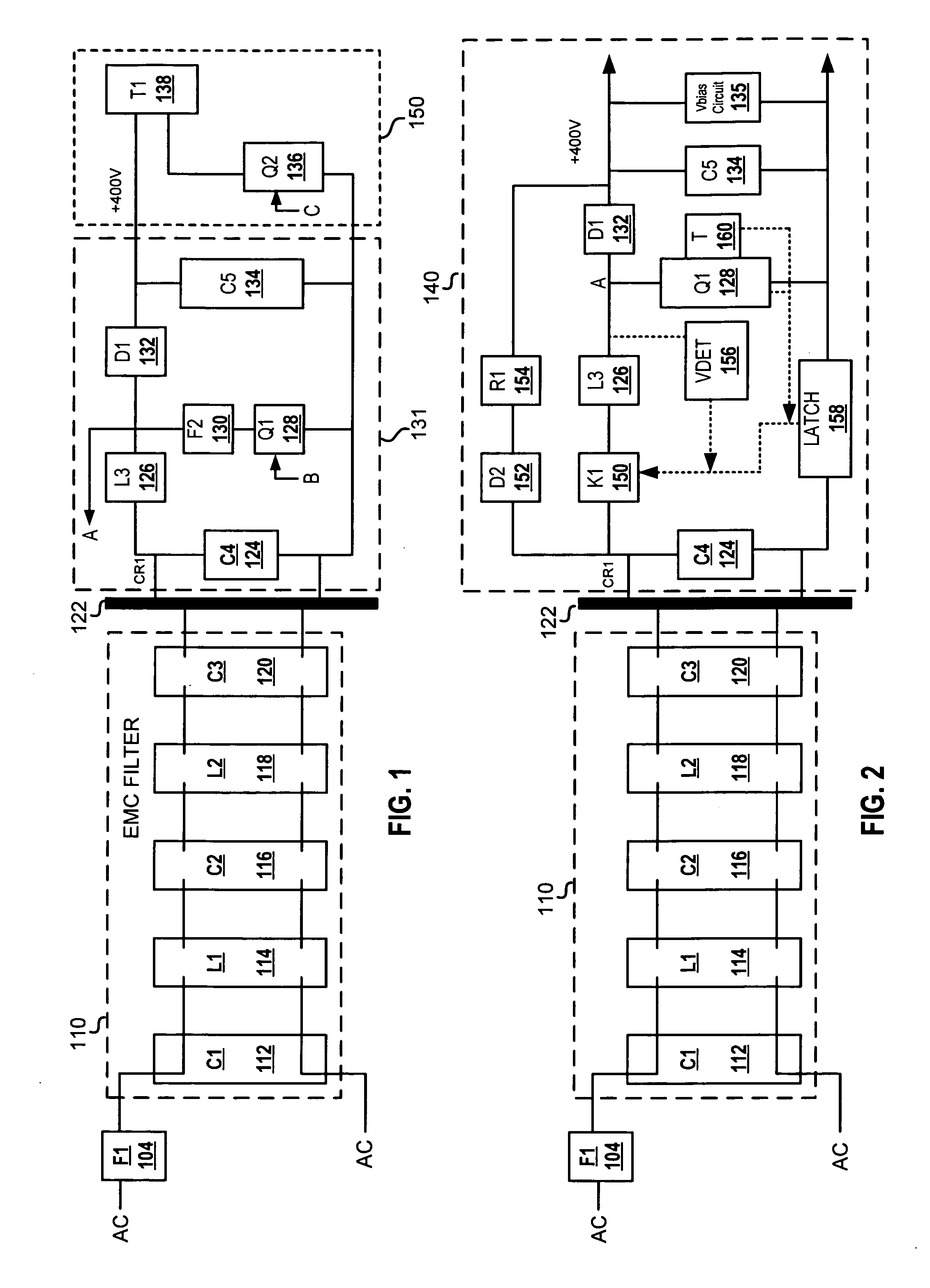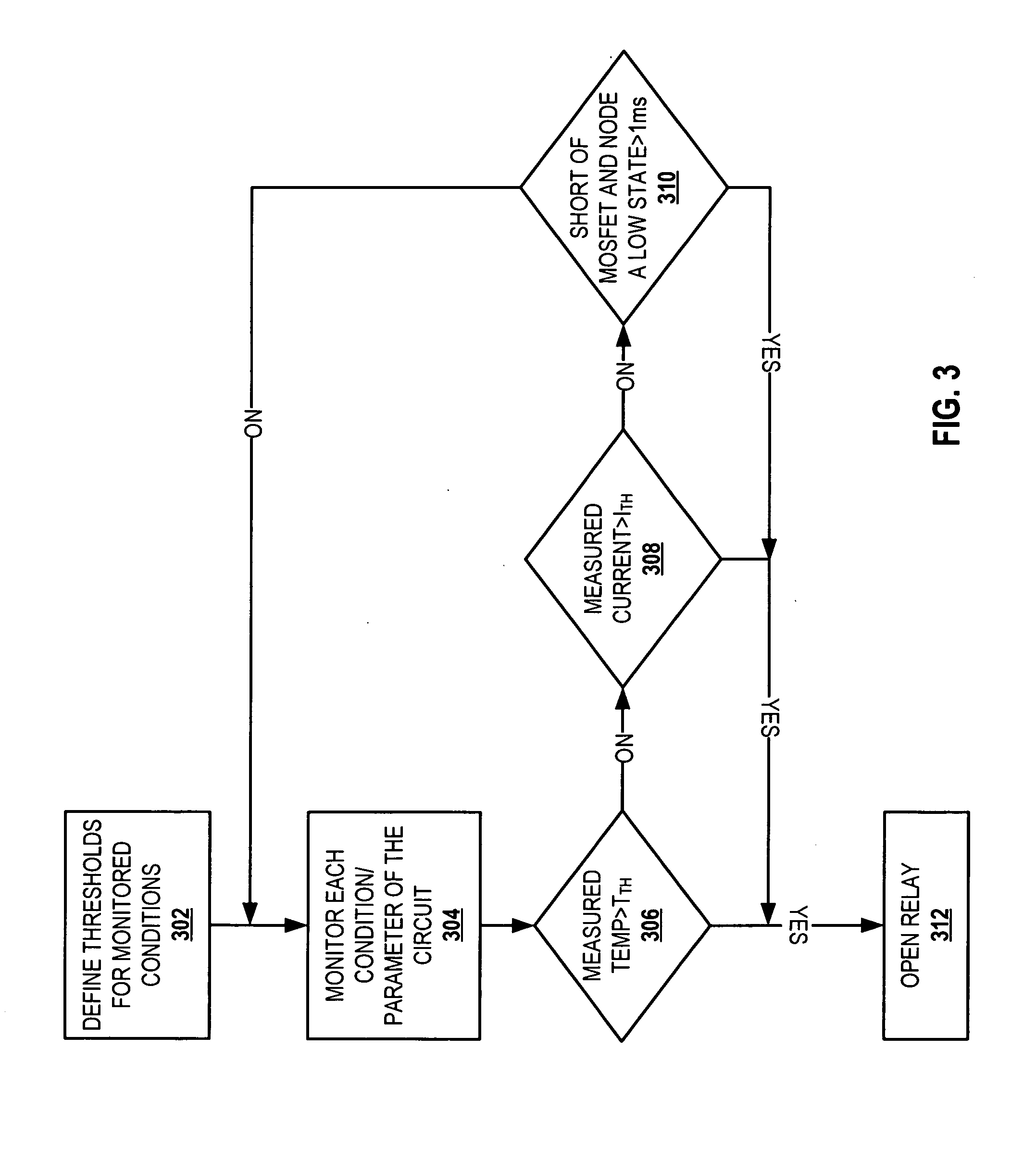Protection of EMC filter components due to failure of boost stage/circuit to prevent smoke, sound or fire in a boost stage under fault condition
- Summary
- Abstract
- Description
- Claims
- Application Information
AI Technical Summary
Benefits of technology
Problems solved by technology
Method used
Image
Examples
Embodiment Construction
[0013] The present invention provides a circuit device and method for protecting electromagnetic compatibility (EMC) components from fault conditions that may negatively affect the components. In one implementation, a circuit device and method are provided to prevent high power dissipation in EMC components when / if the boost stage stops working or malfunctions. In another related implementation, an expanded circuit device and method prevents smoke and fire in case the boost stage switching device fails, shorts, or is defective.
[0014] The circuit device is designed so that the chopper stage (i.e., the stage that follows the boost stage) is latched off if / whenever the boost stage stops working. According to the methods of the invention, whenever such a fault occurs at the boost stage, the circuit immediately disables the stage that provides power to the output load (i.e., load-power-supply stage). This disabling of the load-power-supply stage then prevents very high currents from flo...
PUM
 Login to View More
Login to View More Abstract
Description
Claims
Application Information
 Login to View More
Login to View More - R&D
- Intellectual Property
- Life Sciences
- Materials
- Tech Scout
- Unparalleled Data Quality
- Higher Quality Content
- 60% Fewer Hallucinations
Browse by: Latest US Patents, China's latest patents, Technical Efficacy Thesaurus, Application Domain, Technology Topic, Popular Technical Reports.
© 2025 PatSnap. All rights reserved.Legal|Privacy policy|Modern Slavery Act Transparency Statement|Sitemap|About US| Contact US: help@patsnap.com



